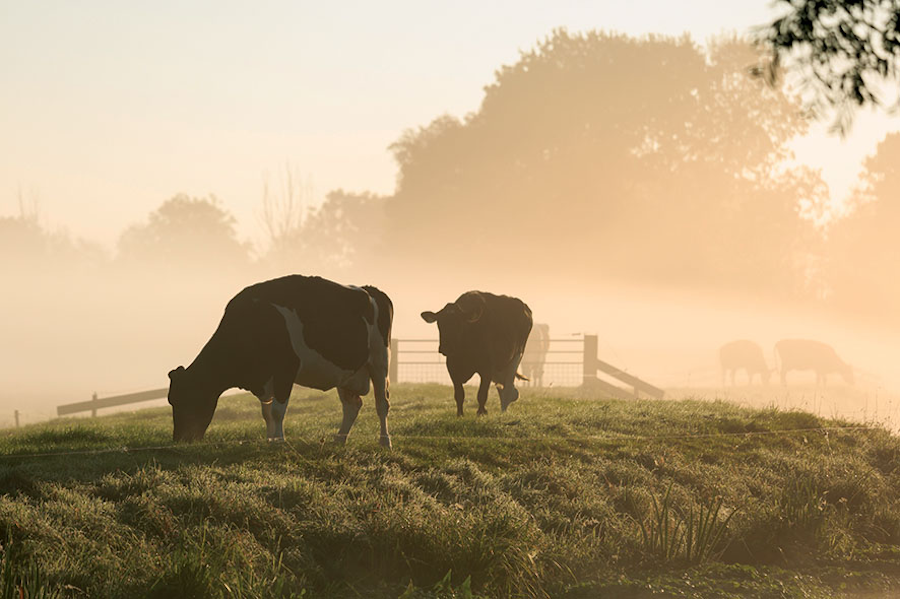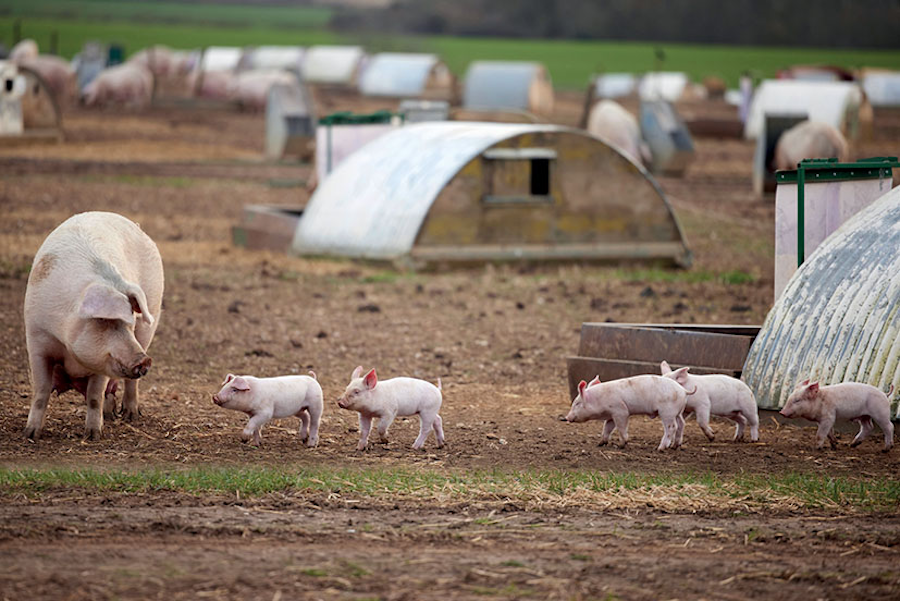Animal health trends in 2023
19th December 2023
As we come to the end of a strange year for weather, we take a look at the impacts on parasite burdens, as well as the wider animal health trends from the year, plus research breakthroughs and new advances. Sarah Kidby reports.

Parasite burdens
It’s been a year of unpredictable weather patterns, which has had a knock-on impact for parasites – delaying peak seasons for liver fluke and worms.
Cattle: Speaking on behalf of COWS, Professor Diana Williams of the University of Liverpool noted that a very dry cold spring, followed by a hot summer and very wet July and August, topped off by a mini heatwave in early September plus heavy rain – will all have impacted the levels and timing of the risks faced by grazing livestock this season.
The final NADIS fluke forecast generally predicts a low to medium risk, with the usual exception of high-risk hotspots in Scotland. “This is almost certainly due to how dry it was at the start of the year. While recent months may have been ideal for the fluke and snail lifecycles, the total window for their development has still been relatively short.”
She added: “The serum antibody ELISA test, which is done on blood samples taken from 10 individuals is an extremely valuable tool. Using this test, calves born in 2023 can be monitored to look for evidence of exposure to liver fluke. Repeated at regular intervals, testing like this reduces the risk of unnecessary or mistimed treatments.
“Meanwhile, young cattle that have grazed on pastures used by other cattle during the last 12 months are likely to be at risk of roundworms. Encysted larvae of Ostertagia may also be a problem and a group 3 macrocyclic lactone (ML) treatment will cover for both of these, according to NADIS.
“Consider leaving mite and lice treatment for now – this can be done later if they become a problem.”
For more information, speak to a vet or visit www.cattleparasites.org.uk. AHDB has a useful table listing most of the available anti-parasitic products for use in cattle.
Sheep: Independent sheep consultant Lesley Stubbings said parasite activity has shifted by weeks or even months in some cases because of the weather conditions. Parasites are “very clever in that they will make up for what they lost earlier on once the conditions are right”.
As well as delays to liver fluke, we didn’t see quite as many worm problems in the summer in some places, but they made an appearance in autumn and winter. Lesley added: “Because of the warmer, wetter winters, whereas a lot of the worm larvae would normally have been killed off during the winter, they’re actually surviving over the winter and coming back to bite us next spring.”
It’s important that sheep farmers don’t let their guard down with liver fluke and remain vigilant all winter.
As we enter times of less and less predictability and changing weather patterns, testing is critical. On a recent SCOPS podcast focusing on liver fluke, one farmer said that in the worst situation, there was a four-month difference between when they would usually treat sheep for fluke, and when they actually needed to treat. “Since they started testing to time it, not only have they avoided using unnecessary treatments, but actually the sheep are better off because they are treating them at the right time,” Lesley explained.
Whilst the frequency of testing will vary farm to farm and depend on conditions, a general rule is every 3–4 weeks. Additionally, the results are useful for giving you advance warning of where there’s likely to be a big challenge, especially when it comes to faecal egg counts, as it’s telling you how much contamination is going down onto that particular pasture at that time. “If there’s going to be a very high-risk pasture and you can avoid putting this year’s lambs on there in autumn, that’s going to have massive benefits,” she concluded.
For more information or to check out the SCOPS podcasts visit www.scops.org.uk
First BVD outbreak in 16 years
The first case of BVD in England for 16 years was confirmed in Kent in November – and it was also the first case of new emerging serotype BTV-3. At the time of writing, a total of seven cases had been confirmed in Kent.
The emerging strain, BTV-3, had prompted concern in the industry back in October as it spread rapidly in The Netherlands. The existing BTV-8 serotype vaccine will not offer cross protection against the new strain, Dr Joseph Henry, president of the Sheep Veterinary Society, has warned.
The Ruminant Health & Welfare group is advising a three-pronged approach: Buyer beware (source animals from Europe responsibly and request pre-movement testing); Take action (prioritise biosecurity and report any suspicious clinical signs) and Vigilance is key (monitor livestock closely).
A dedicated bluetongue hotline launched to help farmers with advice and questions on the current situation – 024 7771 0386 (Monday–Friday, 9-5).
“Underestimated” zoonotic disease
Dairy farmers with fertility issues in their herds are being encouraged to test for Q fever, after diagnostic data released by Ceva Animal Health in November showed 50% of herds tested for Q fever were positive. Despite being endemic in GB dairy herds for some years, Q fever has been historically underestimated and awareness of the disease is low among farmers and related industries.
As well as being zoonotic, meaning it presents a potential health risk to farmers and farming families, the disease can be a serious threat to productivity. In the chronic phase, signs reported in the Q test samples that tested positive included: infertility, abortions, metritis/endometritis, retained placenta and pregnancy loss/stillborns/weak newborns.
For further information speak to your vet or to view the Q map showing incidence of Q fever in UK dairy herds visit: www.qfever.co.uk
Mastitis breakthrough
Research recently identified a specific temperature pattern – three rapid temperature increases over a short period – which indicates the early onset of mastitis. This was identified through in-depth analysis of data collected through smaXtec’s health monitoring boluses.
A cow’s inner body temperature increases up to four days before clinical symptoms of mastitis become visible.
The new ‘level zero’ classification, the lowest in severity, is described as inflammation already being present but with a normal-appearing mammary gland and visibly normal milk.
Identifying mastitis at level zero before the somatic cell count (SCC) reaches pathological levels, allows producers to administer a preventative treatment, improving health and milk yields, and resulting in less antibiotic usage and less dumped milk.

Research sheds light on BCoV role in BRD
Recent research by MSD Animal Health found that BCoV was the most prevalent virus found in routine disease screening and nasal swab samples taken during bovine respiratory disease outbreaks.
It was found in 39% of more than 400 nasal swab samples taken between 2020 and 2022, from BRD-affected cattle on UK farms. Additionally, calf serology carried out on 59 UK farms with a history of BRD issues in 2021-2022 revealed 91.5% tested positive for BCoV.
If BCoV was identified, it was also more likely that Mycoplasma, Mannheimia and Pi3 would also be found.
For the first time, MSD has launched a vaccine that specifically protects cattle against respiratory coronavirus – it’s due to be available in the UK in late December/early January.
Zinc oxide update
Since the June 2022 ban on zinc oxide for preventing post weaning diarrhoea in piglets, time is running out to use up remaining supply by the June 2024 deadline. Plus, it’s unclear how much product is actually available, as feed mills are reluctant to be completely transparent, explained Toby Allcock, a vet at Garth Pig Practice.
“Some producers have already run out or have little available. However, the majority still believe they have at least several months’ worth of stock remaining and some even think this will last into next summer.”
However, even beyond June 2024, Toby said there is talk of creating premixes with the zinc already included at this point, which could potentially add six months to the timeline.
Those who still have access to zinc are “pretty much universally still using it”, he continued, and although alternative products have been brought to market, none are achieving the same effect at the same price-point.
The farms dealing with removal best are those with the best facilities for pigs immediately post-weaning. Where producers have removed or reduced levels of zinc, there has been an impact on production, according to Toby. “Inevitably managing this will include the use of antibiotics but fortunately the increase so far has been fairly small. This may well change as more producers are forced to remove [zinc oxide].”



